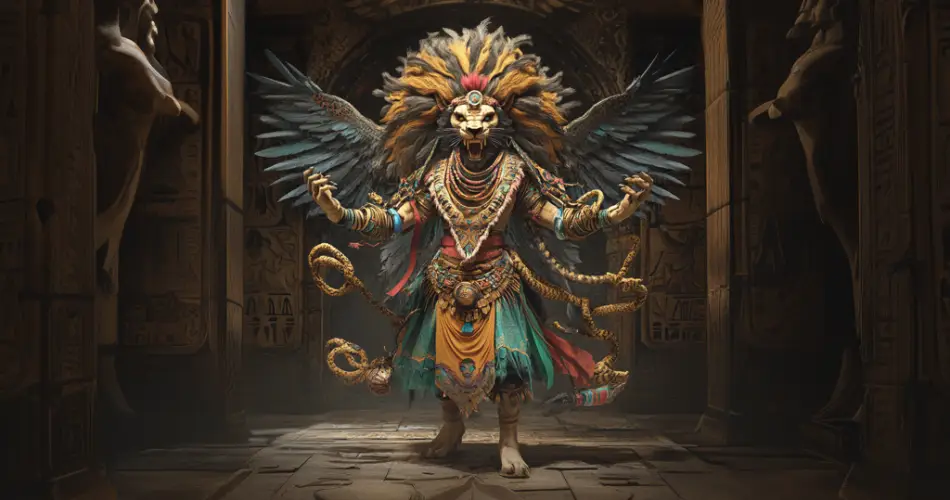Ancient Mesopotamia, like all other regions of the ancient world, had its fair share of powerful gods and goddesses that ruled over and controlled the affairs of men. Among these supernatural beings is Lamashtu, a demon revered as one of the most dangerous and sadistic beings in ancient Mesopotamian mythology. This demoness is believed to attack pregnant women and children. She is also known to bring death and diseases into a household.
This post explains Lamashtu’s mythology, her origin, powers, characteristics, and her role in ancient Mesopotamian societies.
Who is Lamashtu

Lamashtu, also spelt as “Labartu,” is a demoness from Mesopotamian mythology, particularly prominent in the Akkadian and Sumerian traditions. Unlike many demons, who were considered agents of the gods, Lamashtu operated independently. She was a uniquely evil force known for her insatiable hunger and predatory nature.
Lamashtu is similar to Lilith, the ancient Jewish goddess, and Akhkhazu, the ancient Assyrian goddess known to attack and kill children.
Origin Story of Lamashtu
There are several conflicting stories on the origin of Lamashtu. According to one account, the demoness was the daughter of the god of heaven, Anu and his wife, Antu; she was raised in the heavens with other gods. However, because of her violent temper, the demoness was banished from the heavens by her father and was forced to roam the earth.
Another story explains that Lamashtu was born as a demoness and was created by the god Enki to serve as a punishment for the sins of humanity. In this story, Lamastsu grew up in the underworld and was raised by the demon goddess Labartu. Other variations of this story explain that the goddess was born from the tears of Tiamat, the goddess of the salt sea. It is said that after she was born, she was taken to the underworld and raised by demons.
Physical Representation of Lamashtu
Lamashtu is represented as a mythical hybrid creature with a lion’s head, donkey’s teeth and eyes, long fingernails, and the feet of a giant birth with sharp talons. She is depicted as standing or kneeling on the back of a wild ass holding a serpent in one hand while suckling a wild pig and a jackal on her breasts.
Powers and Characteristics of Lamashtu

Although Lamashtu is not a goddess, she has several powers and characteristics that make her one of ancient Mesopotamia’s most feared supernatural beings.
She has a violent temper, and It is believed that the demoness loves to attack pregnant women, causing them to have miscarriages or give birth to stillborn children.
To the ancient Mesopotamians, Lamashtu was a representation of the unknown and unpredictable dangers that threatened families. The mere mention of her name in a household is believed to invite this terrible demoness.
Lamashtu’s evil deeds are not limited to children alone; according to ancient Mesopotamian records, the demoness is known to kill young men, drink their blood and eat their bones. She is also said to infest rivers and streams, destroying foliage and bringing diseases and death to the community.
How was Lamashtu Prevented
The ancient Mesopotamians employed several methods to protect themselves against the Lamashtu’s malevolent influence. One of the ways used to prevent the demon from wreaking havoc was the invocation of Pazuzu, another demon in ancient Mesopotamian mythology. Pazuzu is known to have control over the wind, and although he has his own violent tendencies, he holds an eternal grudge against Lamashtu and can be invoked to provide protection against her.
Pazuzu is invoked by placing amulets and statues of Pazuzu in the home. Pregnant women and new mothers would wear these amulets around their necks to protect themselves and their children from Lamashtu’s wrath.
There were also specific cults dedicated to Lamashtu. These cults were not formed to worship the demon; their primary function was to appease the demoness by offering sacrifices and performing appeasement rituals.
Herbal remedies and plant-based protections were also part of the Mesopotamian toolkit against Lamashtu. Certain herbs and plants were believed to have protective or healing properties that could ward off evil spirits. These would be placed around the home, especially in the areas where women and children slept, to protect against Lamashtu.
Cultural Significance and Symbolism
Lamashtu’s existence in Mesopotamian mythology highlights several key aspects of ancient beliefs. She represents the inherent dangers associated with childbirth and the vulnerability of early life in the ancient world.
High infant mortality rates and the frequent death of women in childbirth were common occurrences in ancient Mesopotamian society; the creation of Lamashtu is a logical attempt to explain these seemingly illogical occurrences.
Secondly, Lamashtu’s character reflects the broader Mesopotamian understanding of evil and chaos. Unlike demons who served the gods, Lamashtu was chaotic and uncontrollable, a representation of natural evils that existed outside the divine order.
Her existence was a reminder of the ever-present dangers and the thin veil between the mortal world and the unknown.
